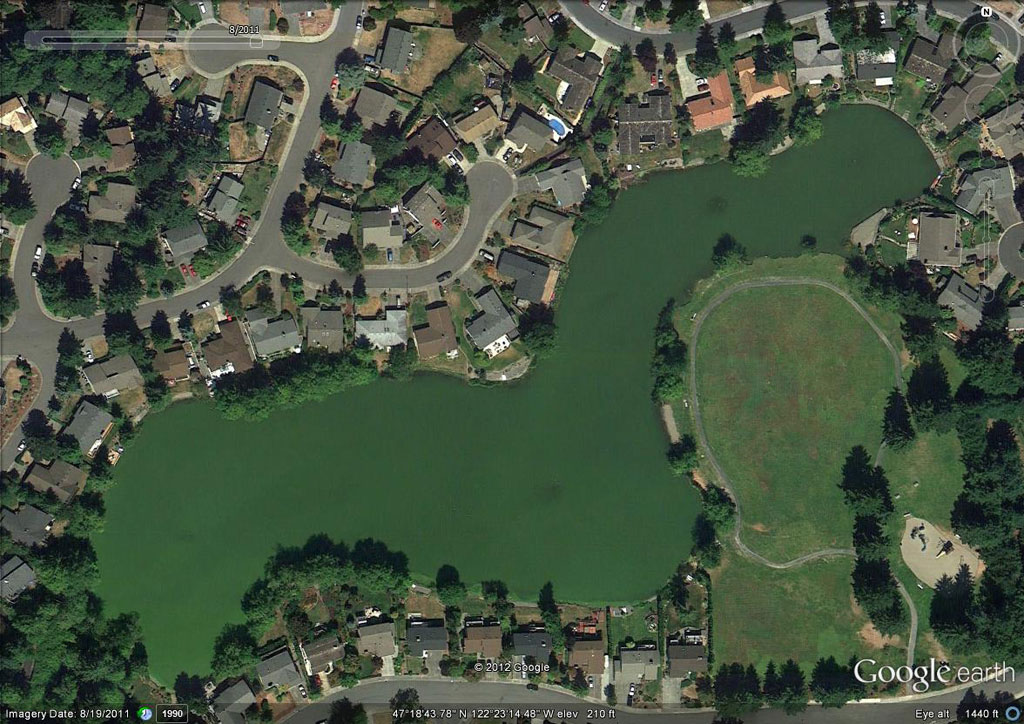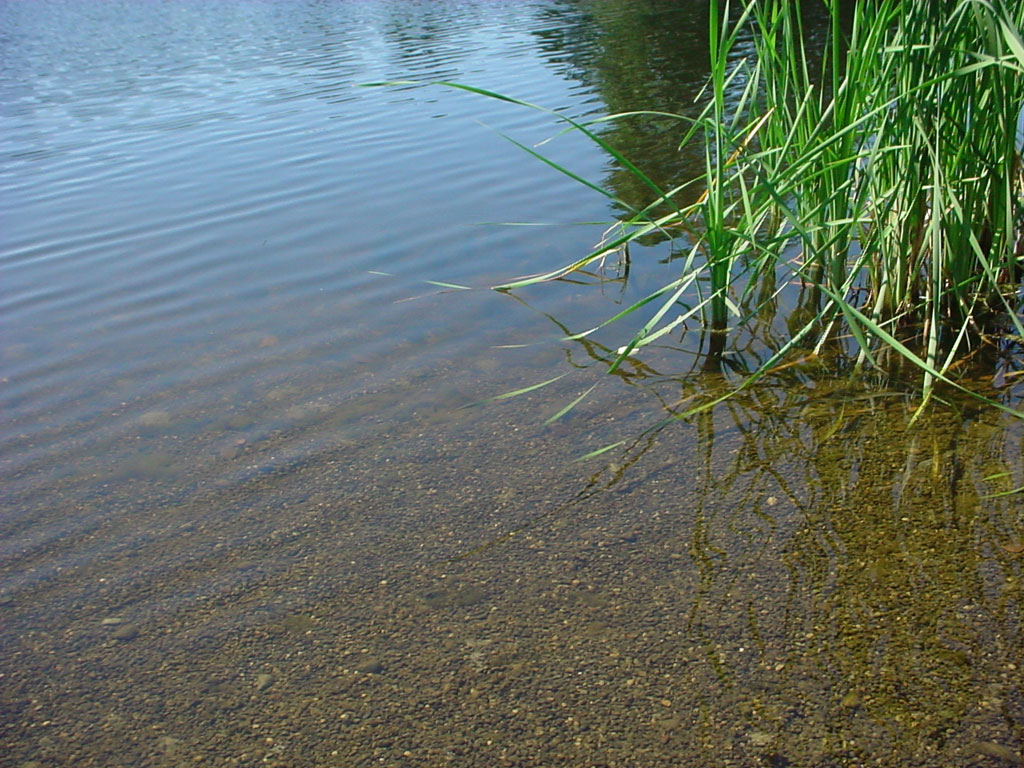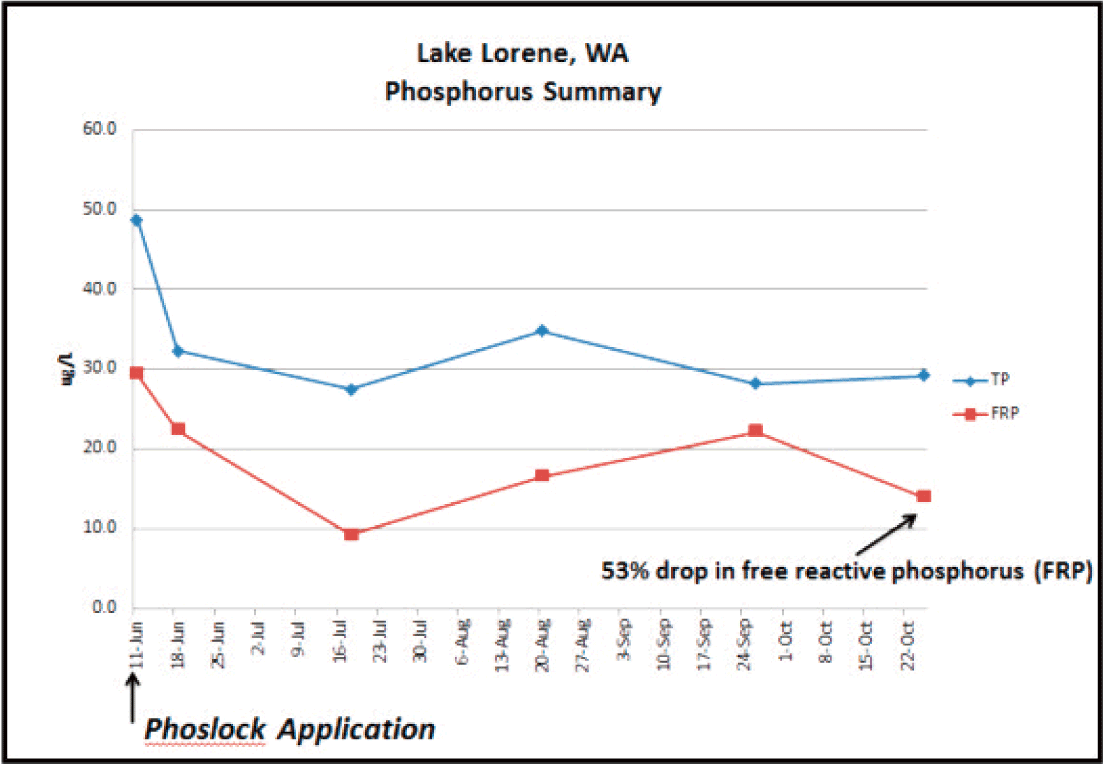Restoration Of Water Quality
In Lake Lorene
Project Overview
Location: Federal Way, Washington
Lake: 8 surface areas, 5 foot average depth
Management Objective: Address eutrophication and restore water quality by reducing in-lake phosphorus pollution.
Solution: Application of Phoslock® phosphorus locking technology.
Results: Significant reduction in phosphorus and improved water quality.
The Problem
AquaTechnex, LLC has completed water quality and aquatic plant maintenance activities at Twin Lakes Homeowners Associations (HOA), Lake Lorene and Lake Jeanne, for more than ten years. Management practices include periodic assessment of water quality conditions and reactive algaecide treatments as needed. An aeration system was also installed in Lake Lorene within the last decade. In recent years, there has been a growing frequency of complaints from the community about the poor water quality, green color, surface algae blooms (cyanobacteria), foul odor and potential decline in waterfront property value.
The primary concern here is hyper-eutrophic status (phosphorus pollution) of Lake Lorene and the potential for health impacts (cyano toxins) and death of fish and wildlife if cyanobacteria blooms continue to persist in the lake. Laboratory analysis of samples collected by City of Federal Way personnel from Lake Lorene have historically documented extremely high microcystin toxin levels (up to 2,160 ug/L, 8/12/09) which is a thousand fold above the drinking water and recreational threshold levels in the State (Washington State Recreation Guidance for Mycrocystins and Anatoxin-a, 2008).
The Solution
AquaTechnex, LLC biologists along with Twin Lake HOA concluded the excessive phosphorus concentrations in Lake Lorene needed to be addressed in order to improve water quality. The project objectives to mitigate the hyper-eutrophic conditions in Lake Lorene were two-fold; 1) bind and inactivate the free reactive phosphorus in the water column and 2) break the internal phosphorus cycling via inactivation of available phosphorus in the sediments. The recommended in-situ approach for Lorene was the application of the phosphorus locking technology Phoslock.
Phoslock was applied to the lake surface on June 11, 2012 using a custom application system equipped with Global Positioning System technology.
View local media coverage of the project.
This was the first application of Phoslock to a public water body in Washington state and was implemented and monitored according to conditions of a permit issued by the Washington Department of Ecology. Water quality was monitored prior to and ~4 months after the Phoslock application.
The Results
One week following the Phoslock application, there was a 34% decrease, 48.8 to 32.3 ug/L, in the average concentration of Total Phosphorus (TP) and 24% decrease, 29.3 to 22.4 ug/L reduction in Free Reactive Phosphorus (FRP). One month following application, TP concentrations continued to decline to 32.3 ug/L and FRP dropping to 9.3 ug/L. The following is a summary of the key water quality improvements and observations 136 days after application (October 22, 2012).
- 53% reduction in free reactive phosphorus
- 40% reduction in total phosphorus
- No blue green algae blooms in 2012
- Secchi depth transparency to bottom (8 feet)
- No adverse impacts to aquatic organisms
Conclusion
As for other beneficial water quality parameters, pH and dissolved oxygen remained stable during and after application. Outside of the typical short-term (< 48 hours) turbidity spike following the Phoslock slurry application, good water clarity quality was observed with secchi depth readings to or near the bottom throughout the season. There was no observed stress or impact to aquatic organisms and wildlife during this project.
The application of Phoslock was very effective in significantly reducing phosphorus pollution and restoring water quality in Lake Lorene. The reduction of in water phosphorus concentrations in Lake Lorene demonstrated the ability of Phoslock initially inactive FRP in the water column, immediately bind available phosphorus in the sediments and break the cycling of FRP from the sediments throughout the year. Phase two of the Phoslock program for Lake Lorene is scheduled to begin in Spring 2013.
Lake Jeanne continued to experience poor water quality and dense cyanobacteria blooms in 2012. Having observed the benefits of a phosphorus mitigation program at Lake Lorene, Lake Jeanne HOA is planning to implement a Phoslock program in the near future.
Project Images

Lake Lorene in August 2011

Phoslock applied to the lake by boat as a dilute slurry.

Lake Lorene after Phoslock application – July 2012

Lake Lorene, August 2012

